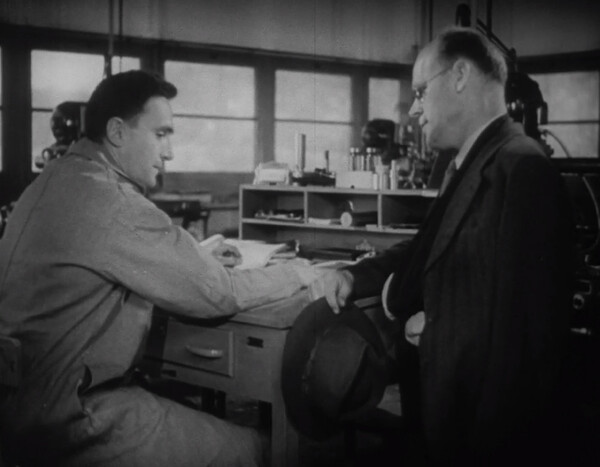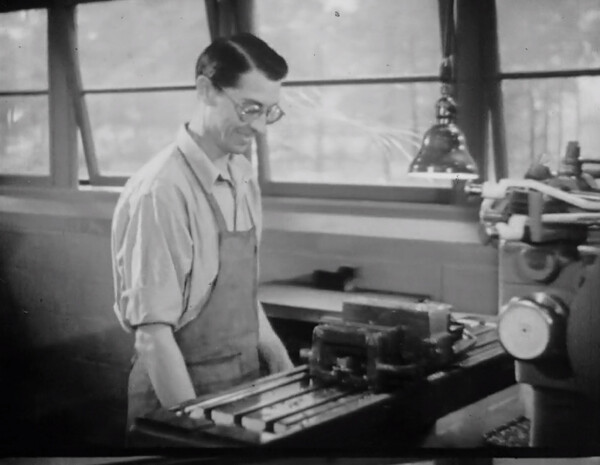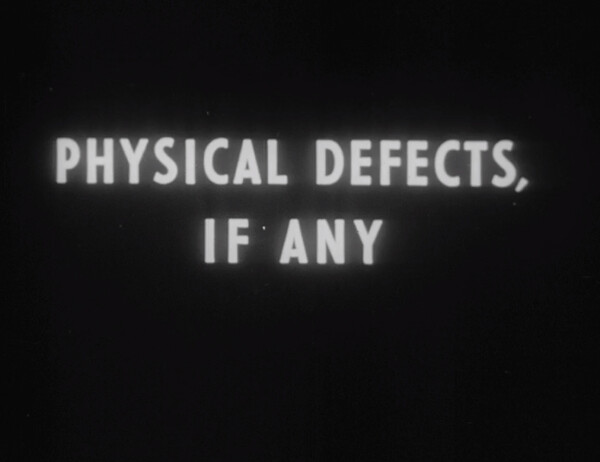The War and Workers with Disabilities

Depictions of workers with new physical ailments, like this worker with his arm in a sling, were often highlighted as potential threats to productivity.
Americans with disabilities were largely overlooked or excluded from basic aspects of American society, namely education and employment, since its earliest days. Early education systems in the U.S. either excluded children with disabilities or separated them to underfunded and poorly trained sections.62 Due to state supremacy in matters of education, even the founding of the Department of Education made little progress on providing new educational opportunities for the disabled community.63 It wasn’t until the 1860s that educational initiatives for deaf individuals started, and not until around 1900 for schooling for children with intellectual disabilities.64 In the early years of educational opportunities, students with disabilities were separated from other students and commonly placed with foreign students needing to learn English. Furthermore, some early programs graded perspective students on tests with scoring cutoffs to determine which students would be deemed “‘educatable’” or not; children found to not be “‘educatable’” were not provided with opportunities to attend school.65 It was not until after the war, in the early 1950s, that educational classes for all children identified to have disabilities became a reality. Thus, the prospects for enough education and training to bring high employment aspects were questionable for Americans with disabilities heading into WWII.

Workplace safety was critical in industrial work as accidents were a reality, as this worker demonstrates with protective eyewear.
Likewise, Americans with disabilities in the first decades of the twentieth century encountered serious challenges to finding employment. Stigmas against individuals with disabilities led to many employers disregarding them during the hiring process. These stigmas centered around inaccurate thoughts about potential employees with disabilities, mostly physical disabilities, being less productive, lowering productivity of teams, being more prone to injuries, and having a higher demand for time off.66 A common tool for weeding out job candidates with physical disabilities was the pre-employment physical examination, which often unfairly included the performance of actions not related to the actual job description.67 Due to difficulties finding paid labor, many individuals with disabilities would be stuck in low paid positions, part-time work, or be unemployed.68 The economic downturn of the Great Depression would impact workers with disabilities particularly hard. As unemployment rates rose, competition for limited job opportunities combined with unequal hiring practices created significant hallenges. New government programs aimed to boost employment under President Roosevelt also overlooked individuals with disabilities. Instead of including these Americans on unemployment statistics or assisting them with finding employment, the government broadly bunched Americans with disabilities together with mothers and the elderly, creating a collective category “‘unemployable’” and giving the group a social safety net benefit instead.69 The binary classification of disability did not allow for flexibility for many individuals which could otherwise still perform a variety of jobs at high levels. Unhappy with exclusion from employment programs and stuck with a limited social benefit income, an income often less than what was possible through paid labor, some Americans with disabilities protested their treatment.70 For the first 40 years of the 1900s, employment opportunities were challenging due to economic conditions and societal dynamics for Americans with disabilities.

A popular phrase in job interviews and on applications at the time, which was often used to discriminate against people with disabilities.
Sudden demand for labor due to America entering into official hostilities of World War II would quickly change the employment fortunes of individuals with disabilities. Needing to fill millions of positions from men and women entering the armed forces, Americans with disabilities soon found vast new employment opportunities. In need of employees, many private companies invested in rethinking ways of operating and by creating additional training opportunities to make positions more accessible to employees and future employees with disabilities.71 These changes were particularly noticeable in the industrial manufacturing sector, as wartime contracts for industrial goods soared.72 Some rehabilitation programs were available to the public, as early as 1920 on the federal level to retrain and create employment opportunities to workers with disabilities, yet expansion of these programs or greater private business partnerships were called for.73 Further, examinations of individuals with disabilities on the job were undertaken, proving fears of hiring those with disabilities to be unfounded. Studies showed that handicapped workers were actually more productive than other employees, had better attendance records, and exhibited greater workplace safety, among other positives.74 The increased employment of workers with disabilities was a welcome sign after years of struggle in the Great Depression, but these gains would be put to the test with the coming end of the war.
The importance of correct job placement for workers with physical disabilities is highlighted in this scene, something likely less common before wartime worker shortages.
As World War II began to close, the return of American soldiers would put wartime workers with disabilities in an uncertain position. When being drafted for the war the U.S. government, through the Re-employment Division of the Selective Service System, guaranteed soldiers that they would either have their old jobs back or be assisted in finding similar positions upon honorable discharge and return to civilian life.75 Additionally, due to the large-scale nature of fighting and new forms of medical treatment of injuries from previous conflicts, like plasma transfusions and quicker access to medical services in combat, a multitude of returning service members would have some form of physical or mental disability.76 Early calculations were alarming for employers. In the Harvard Business Review in 1944 Ross A. McFarland, a researcher and psychologist on disabilities stated startling potential numbers for veterans returning from Europe after the likely fall of Germany, “Although, of course, not all veterans will be physically handicapped, it is estimated that 500,000 men with leg, arm, or hand missing, one or both eyes gone, deafened, nervously ill, or otherwise incapacitated will need vocational rehabilitation.”77 To aid with government initiatives to retrain citizens, some pointed to private companies and their efforts to rehabilitate workers with disabilities during the earlier stages of the war to once again step-up and expand their efforts for veterans coming home.78 Rehabilitation was even calculated to be cost effective for the government, with the average cost of rehabilitation for an individual being lower than $500, potentially saving taxpayers years of direct monetary assistance.79 Even so, sustaining high employment rates for individuals with disabilities would be a challenge with the economic transition to post-war living.

Many industrial processes involved potentially dangerous activities, like this machine shaving metal and throwing debris into the air.

Films, like Maintaining Workers' Interest, highlighted cluttered work areas as a potential area for time inefficiency and safety issues.


